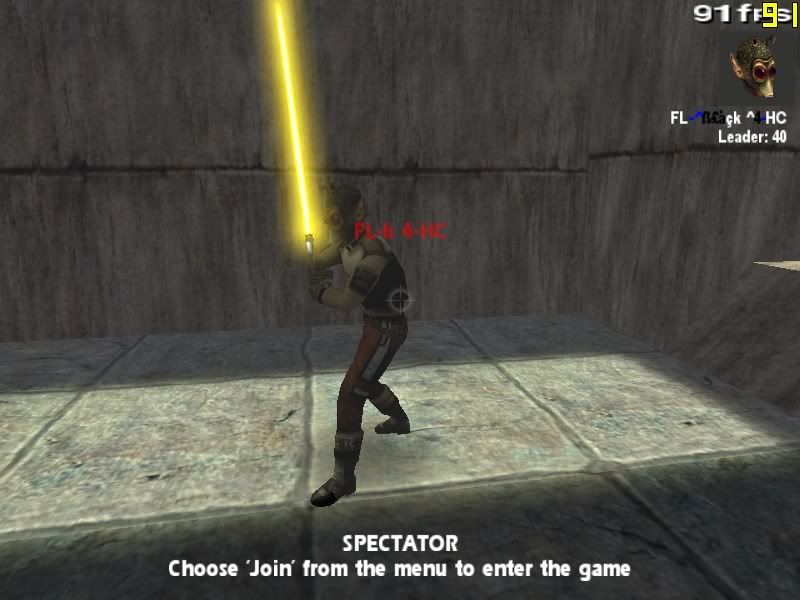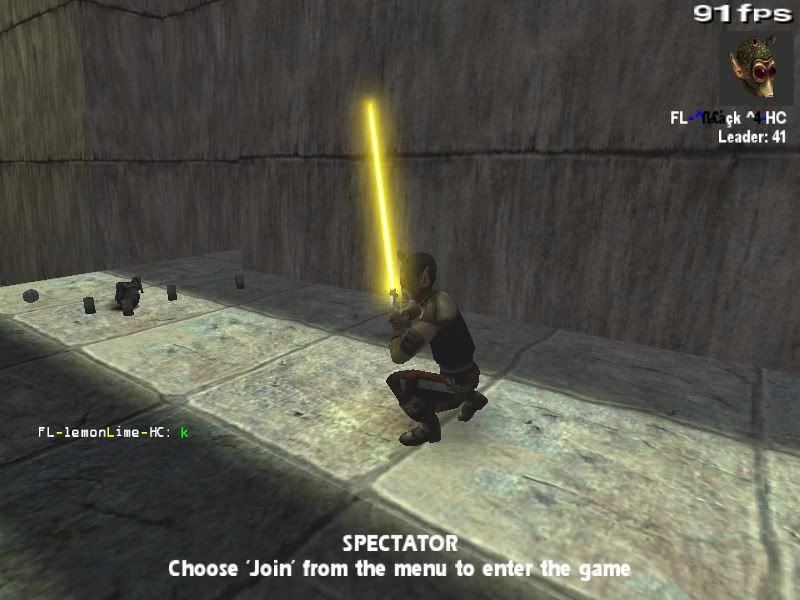|
|
Post by lemonLime on Feb 18, 2011 21:03:27 GMT -5
Alright. Now that we have covered blocking, parry is just a step away. Well, if only it were that simple... Of course, all of the rules of blocking apply, but instead of just deflecting the attack, we are going to counter it. This is acheived by hitting attack right when you block. To do this, you must be fairly confident in your ability to block, and know when the block is most likely to occur. If you are not at that point, this is probably a lesson you should save until later. If you think about it, block (and consequently parry) happens when two sabers make contact. In red stance stationary position, your saber is held just below shoulder level. Anyone with any experience in saber combat will aim underneath your saber.  In order to make the most use of the surface area of your saber in red stance stationary, the most logical thing to do is to crouch. This will significantly decrease the area that your opponent can cleanly hit you in.  This is one of the best ways to start practicing parry. If someone performs a D swing at you: crouch at the last possible second that is comfortable for you ( to avoid your opponent being able to adjust their aim down) Angle your saber slightly to the right to "catch" their swing on your saber. As the saber makes contact (not sooner!), press attack. This should initiate a counter swing or "parry". Here is a demonstration of a stationary parry crouching. I reccomend spending some time with a partner taking turns exchanging parrys to familiarize yourself with the motion. LL |
|